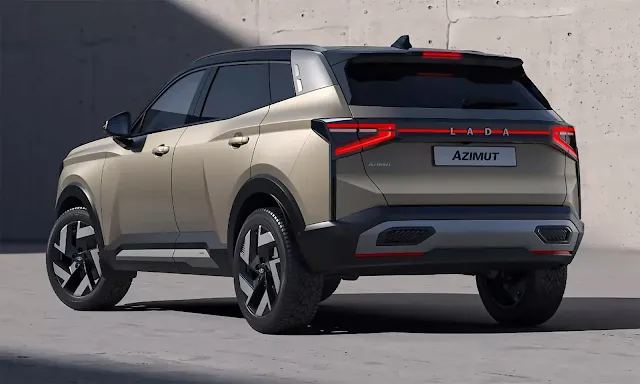The Lada Azimut is AvtoVAZ's first new SUV in almost 30 years, designed to offer a modern and capable option in the crossover segment. Based on an updated Vesta platform, it features a bold "X-style" design, a refined interior with digital displays, and a choice of naturally aspirated gasoline engines, with a turbocharged option planned for the future. Positioned as a value-for-money option, the Azimut aims to rejuvenate the Lada brand and cater to a domestic market seeking modern, well-equipped vehicles.
After nearly three decades, Russian automaker AvtoVAZ, under its Lada brand, has officially pulled back the curtain on a brand-new SUV model: the Lada Azimut. Revealed at the 28th St. Petersburg International Economic Forum, the Azimut marks a significant turning point for Lada, aiming to shed its budget image with a fresh design, modern features, and an ambition to compete in the highly competitive crossover segment. Production is slated to begin in 2026 at the Togliatti plant, with an estimated starting price of approximately 2.5-3.0 million rubles (around $32,000-$38,000 USD), making it Lada's most expensive model to date.
A Fresh Design Language
The Azimut breaks away from traditional Lada aesthetics, adopting a more aggressive and contemporary design. It features a prominent "X-shaped" front grille, striking LED headlights connected to large air intakes, and a high, contoured bonnet. The side profile is characterized by sharp creases over the wheel arches and two-tone 18-inch alloy wheels, lending it a muscular and robust appearance. At the rear, C-shaped LED taillights are connected by a thin light bar, further enhancing its modern appeal. With a ground clearance of 208 mm, the Azimut is designed to handle diverse road conditions, protected by an unpainted plastic body kit.
Modern Interior and Tech Features
Inside, the Azimut promises a significant upgrade in terms of comfort and technology. The five-seat cabin boasts a digital cockpit, featuring a full LCD instrument cluster and a 10-inch touchscreen infotainment system. This system is developed by Russian companies, Sber and Navio, and includes built-in navigation, a virtual assistant, and support for services like fuel payments. Standard features include a six-speaker audio system, a reverse camera, and keyless entry. Optional amenities elevate the experience with wireless phone charging, a panoramic roof, dual-zone automatic climate control, heated side mirrors, a power tailgate, and a 360-degree camera system. Power-adjustable steering wheel and seats further contribute to driver comfort.
Powertrain Options and Performance
Under the hood, the Lada Azimut will initially offer two naturally aspirated gasoline engine options: a 1.6-liter unit producing 120 hp and a 1.8-liter unit delivering 132 hp. These engines can be paired with either a six-speed manual transmission or a continuously variable transmission (CVT). Lada also confirmed plans to introduce a more powerful 150 hp turbocharged engine with a conventional automatic gearbox in the future. While the Azimut is primarily front-wheel drive, the elevated ground clearance and robust build hint at its capability for rougher terrains.
Strategic Positioning in the Russian Market
The Lada Azimut's unveiling signifies AvtoVAZ's ambition to cater to the evolving demands of the Russian automotive market. By offering a modern, well-equipped SUV at a competitive price, Lada aims to solidify its market leadership and provide a compelling alternative to imported vehicles, particularly from China, which have gained significant traction in recent years. The Azimut is positioned to offer the "best price-to-quality ratio" in its segment, reflecting a strategy to provide reliable and functional vehicles with an enhanced user experience. Its development, which involved creating nearly 1,000 new or modernized components, underscores a commitment to increasing technological independence for the Russian automotive industry.



